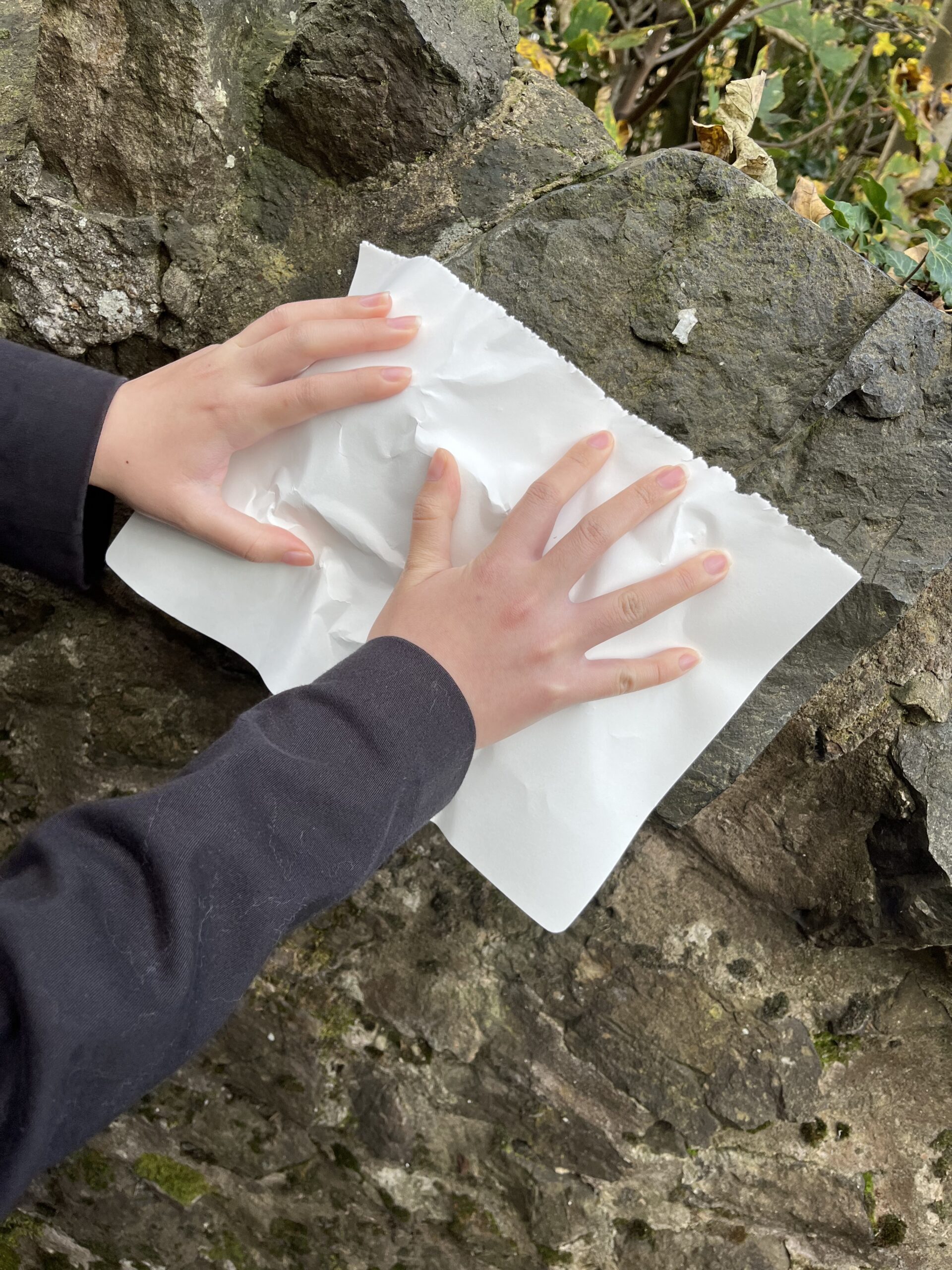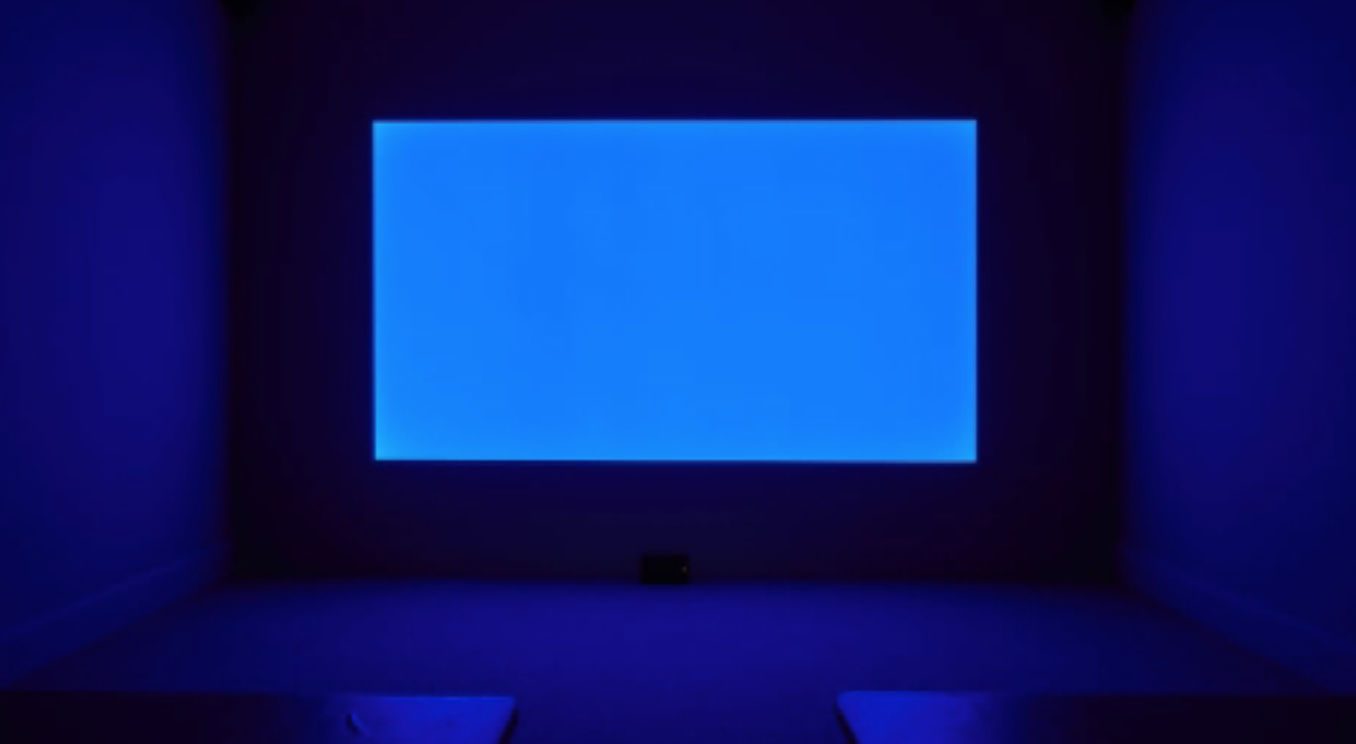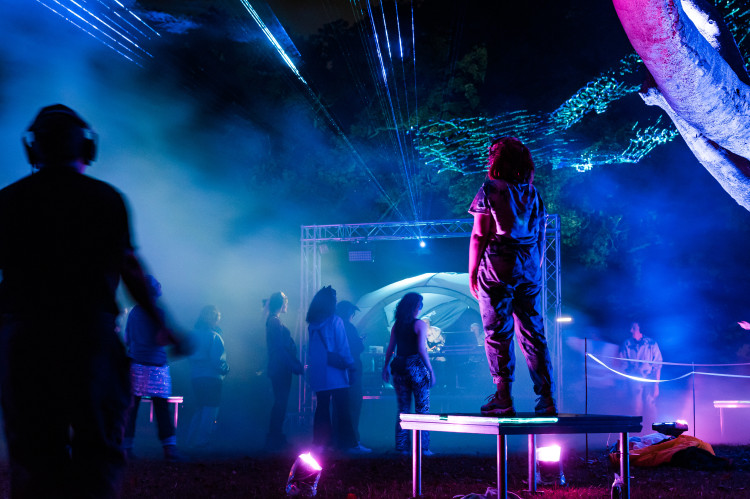“Embodied knowledge, while often denigrated and disavowed within the modern colonial episteme, confirms that Western scientistic validity comprises only one kind of knowing. Manifest through poetics, aesthetics, and other bodily attunements, sensuous knowledges open to alternative modes of relation. […] A sensory, embodied, affective, and imaginative relation to the world opens to a different kind of ethics and politics.
“The dominance of vision in arts and science should make room for the other senses. ”(Caroline A. Jones) In contrast to painting and sculpture, which can only be appreciated by the eyes, there is an increasing number of works that include other sensory experiences in contemporary art, allowing viewers to taste, touch, smell, and hear. This learning sprint focuses on the emergence of multiple sensory experiences in contemporary artworks. By combining course practice, theoretical readings, and contemporary artworks, I will investigate two key issues in this blog: how sensuous knowledge is open to alternative modes of relation in contemporary art, and whether artworks centered on senses other than sight entirely negate the visual.

Based on a selection of contemporary art examples and practice in class, I argue that artists have created work that engages sensuous knowledge and encourages different ways of connection between humans and themselves, human and human, human and nature. Firstly, from the perspective of the relation between human beings and themselves, today ”the body and its visceral surroundings are studded with earphones, zooming in Psychopharmaceuticals, extended with prostheses, dazzled by odorless tastes and tasteless odors, transported by new media, and buzzing with ideas ” (Caroline A. Jones, 2006, p. 1). Sensory experience provides us opportunities to draw our attention back to sensations that we frequently ignore. For example, during this Thursday’s field trip to Calton hill, my basho organized an experiential trip called ‘touch Calton hill’. We decided to focus on the experience of touch, so we took several types of paper and pressed them against walls, floors, and plants to capture the tactile sensations through the folds of the objects left on the paper. Before this trip, I never paid attention to how the walls felt to touch, how the uneven ground felt to step on, or how the wind felt while I was trekking. This excursion was like a kind of meditation for me, helping me to tune out the visual distractions and concentrate on how I felt in my body. It also reminded me of AM Kanngieser and Zoe Todd’s lecture “Listening as Relation, an Invocation” where they talk about the need to get “permission” before conducting research in the field. “we sit and we wait until there is an answer resonant in our bodies, a deep sense of how and where to move”(Zoe Todd)


Talking about the relation between humans, I would like to bring up two works of art: blue by Derek Jarman and Untitled by Felix Gonzalez-Torres, both of which were based on the author’s or the author’s friend’s experience with AIDS. Blue could be described as a micro-film that only has the blue color and no other visuals. The background sound is the artist’s own story narrated by himself and accompanied by sound effects. In this way, the artist forcibly deprives the audience’s vision, just as his own irrevocable blindness, caused by the detachment of his retinas due to AIDS infection. Untitled is an “allegorical portrait” created by Felix Gonzalez-Torres for his AIDS-affected friend Laycock, consisting of many candies wrapped in colored cellophane. All the sweets weigh exactly 175 pounds (Laycock’s weight when healthy), and the viewer is encouraged to take them away during the exhibition. As the quantity of sweets decreases, we can also relate to how a healthy person is gradually wasted away under the influence of illness. In both works, the artist lessens the impact of the visual on how the work is presented, whether on purpose or accidentally. Blue directly closes the viewer’s access to the visual, while untitled expands the viewer’s sense of touch, taste, smell, and other multi-dimensional senses, allowing the work to be appreciated by more than just the visual. In comparison to visual-based artwork such as photographs and videos that express the suffering of people living with AIDS, in sensory experience, empathy is felt by the viewer, fostering a closer contact between viewers and artists and enabling viewers to more fully comprehend the emotions of the creators or a particular group of people (such as people living with AIDS). As Jenna Carine Ashton comments on Derek Jarman’s Blue: “we look, engage, but ultimately we are safe in the knowledge that the image is The horrors are contained within the frame of the photograph. Jarman’s still blue screen, behind which unexpected sounds and voices emerge, offers no reassurance.”

Art is frequently not just available to one form of relation, for example when we talk about the connection between people and nature, some of the works or activities listed above already demonstrate this feature. Both the Calton Hill Field Trip and “Listening as Relation, an Invocation” provide us with a new method for exploring our surroundings and strengthening our bond with the natural world. A good example of this was provided by the artistic performance ‘Echo In the Dark’ this year. Composer and performer Hanna Tuulikki and Scottish music producer Tommy Perman mixed their composed voices and rhythms with bat echolocation (recorded and translated using a superheterodyne bat detector) to create new dance music. The artists set the stage in Hospitalfield, surrounded by trees, with Butterflies, buzzards, and Crows hovering in the sky, and people dancing in the middle of the field with synchronicity. The album itself contains nearly 13 bat echolocations. The sounds of people’s footsteps, music, conversations, and other local creatures combine to ‘reiterates the message of co-existence’. “And it is this same notion that we must carry home with us and implement in our daily lives; to acknowledge that we are an intrinsic part of nature, woven into the same thread”(Blue Kirkhope,2022)
The question of whether works that emphasize senses other than sight fully negate the visual arises after analyzing various applications of sensory experience in contemporary art. In my opinion, the answer is no; they still have a visual aesthetic. On the one hand, vision is the most intuitive and essential way that people who do not have visual impairment perceive the world and gather information, therefore if an artwork is intended to be viewed by the general public, it must include a visual component to support the work’s presentation. Even in Derek Jarman’s Blue, a piece meant to simulate blindness for the audience, the artist picked Yves Klein’s artificial ultramarine, IKB, International Klein Blue rather than another color of blue at random.” how daringly camp and modern this color is going to be”, according to Taussig (2009: 42). This is the color that best suits Jarman’s work, it pierces your eyes so sharply that you cannot ignore this blue, “screams for attention through the cinema screen” (Jenna Carine Ashton, 2013 ).

On the other hand, focusing on other sensory experiences is not about ignoring vision, but rather focusing on the synthesis of sensory experiences. In the modern world, an excess of visual information frequently causes us to ignore other senses, leading to a state of sensory imbalance. Sensory experience is about bringing back our attention to the other senses, rather than denying the importance of the vision. Japanese new media artist Ryoichi Kurokawa’s audio-visual installation ‘rheo: 5 horizons’ focuses on a synaesthetic experience, using five flat-panel-displays to show scenes of digitally reproduced high-resolution images, synchronizing them perfectly with playbacks of field recordings to inspire a new sensory experience of “watching sound” and “hearing images”. According to Ryoichi Kurokawa, “Audio is one thing, image is another. There is a big difference between light and sound. However, when I create audiovisual works, I consider sound and imagery as a unit not as separately. ”
In conclusion, I think that sensory experiences in contemporary art encourage different ways of relating to one another, nature, and oneself. Because the vision is one of the primary means through which the artists convey their intentions, as well as because the artists’ focus is on the overall sensory experience rather than the elimination of the visual, these works do not deny the presence of the visual.
Citations used in this page:
- Nele Wynants, Sensorium: Embodied Experience, Technology, and Contemporary Art.
Caroline A. Jones (ed.)., Literary and Linguistic Computing, Volume 23, Issue 4, December 2008, Pages 493–495, https://doi.org/10.1093/llc/fqn008 - JONES, Caroline A., ed. Sensorium: Embodied Experience, Technology, and Contemporary Art. Cambridge: The MIT Press, 2006.
- CTM 2021: »Critical Modes of Listening«. www.youtube.com, https://www.youtube.com/watch?v=kGe0DYMroEg. Accessed 4 Nov. 2022.
- Ashton, Jenna Carine. “Derek Jarman’s Blue: Negating the Visual.” Journal of applied arts & health 3.3 (2013): 295–307. Web.
- Echo in the Dark 2022 |. https://www.hannatuulikki.org/portfolio/echo-in-the-dark-2022/. Accessed 4 Nov. 2022.
- Echo in the Dark | Caught by the River | Caught by the River. https://www.caughtbytheriver.net/2022/09/echo-in-the-dark-hanna-tuulikki-review/. Accessed 4 Nov. 2022.
- Taussig, Michael. “What Color Is the Sacred?” Critical Inquiry, vol. 33, no. 1, 2006, pp. 28–51. JSTOR, https://doi.org/10.1086/509745. Accessed 4 Nov. 2022.
- RYOICHI KUROKAWA. http://www.ryoichikurokawa.com/project/r5h.html. Accessed 4 Nov. 2022.




s2444438
27th November 2022 — 11:09 am
It is evident that the author has read extensively and has carried out a careful analysis of the writing. I liked the author’s discussion of the second issue, namely that beyond visual is not a denial of vision, but rather a way to direct the viewer’s attention to other sensory systems and to achieve a state of sensory integration and linkage. It is slightly unfortunate that in the analysis of the first issue, the author provides little critical thinking or review of her own, although she cites a great deal of literature.
s2341902
4th December 2022 — 12:30 pm
Chenyan shares his practice and analyses his understanding of beyond visual in the context of relevant artworks. I agree with her that these works still have a visual aesthetic, but it is worth discussing how to define what we mean by aesthetic.
s2441634
5th December 2022 — 8:35 pm
In this article the author details her interpretation and analysis of the scenario in this Sprint. As a fellow participant on the field trip to Calton Hill, it was a pleasure to start this journey of touch with the author, using the sense of touch to experience a location was also a first time experience for me and it was a novel and interesting experience to ignore the visual for a while and focus on the sense of touch. I liked the author’s point that ‘focusing on other sensory experiences is not about ignoring vision, but rather focusing on the synthesis of sensory experiences.” The human senses are interconnected and interact with each other, no one sense exists on its own, and the author uses her extensive reading and personal thoughts to convey her thoughts and feelings on going beyond the visual.